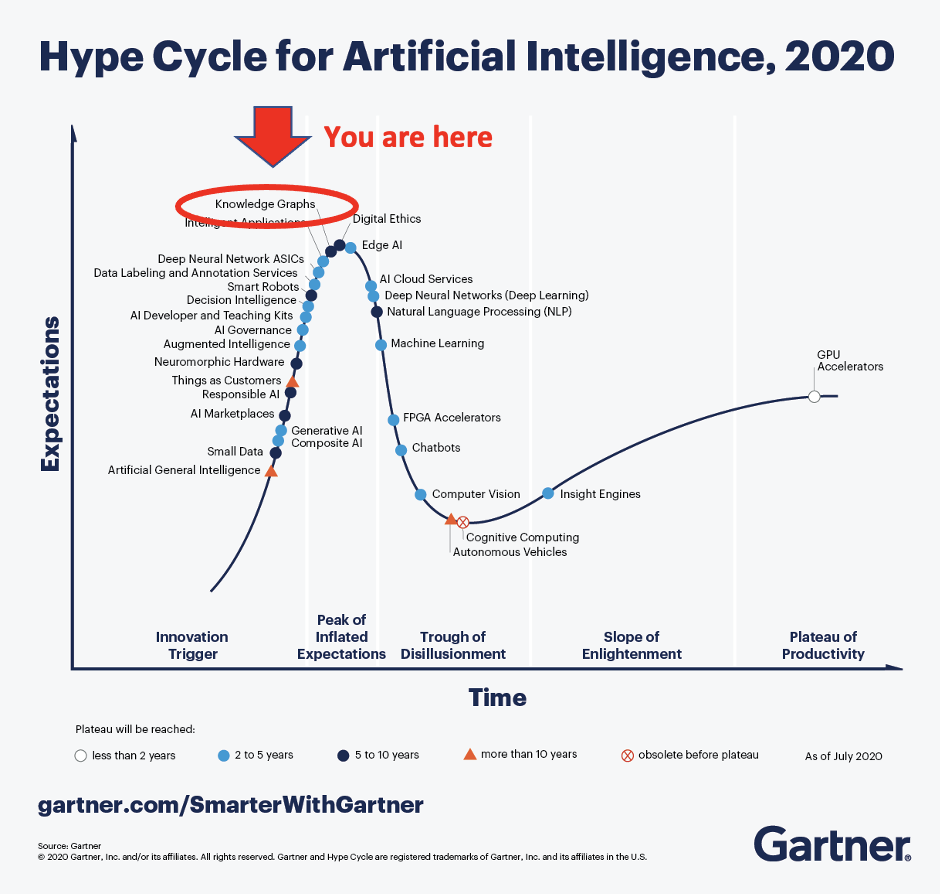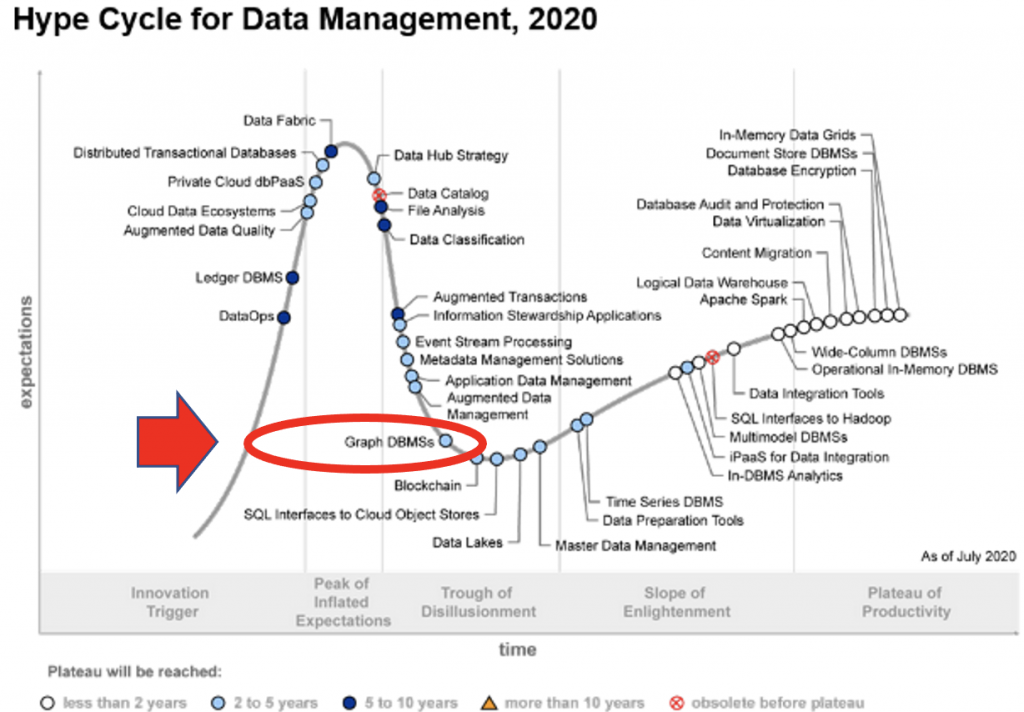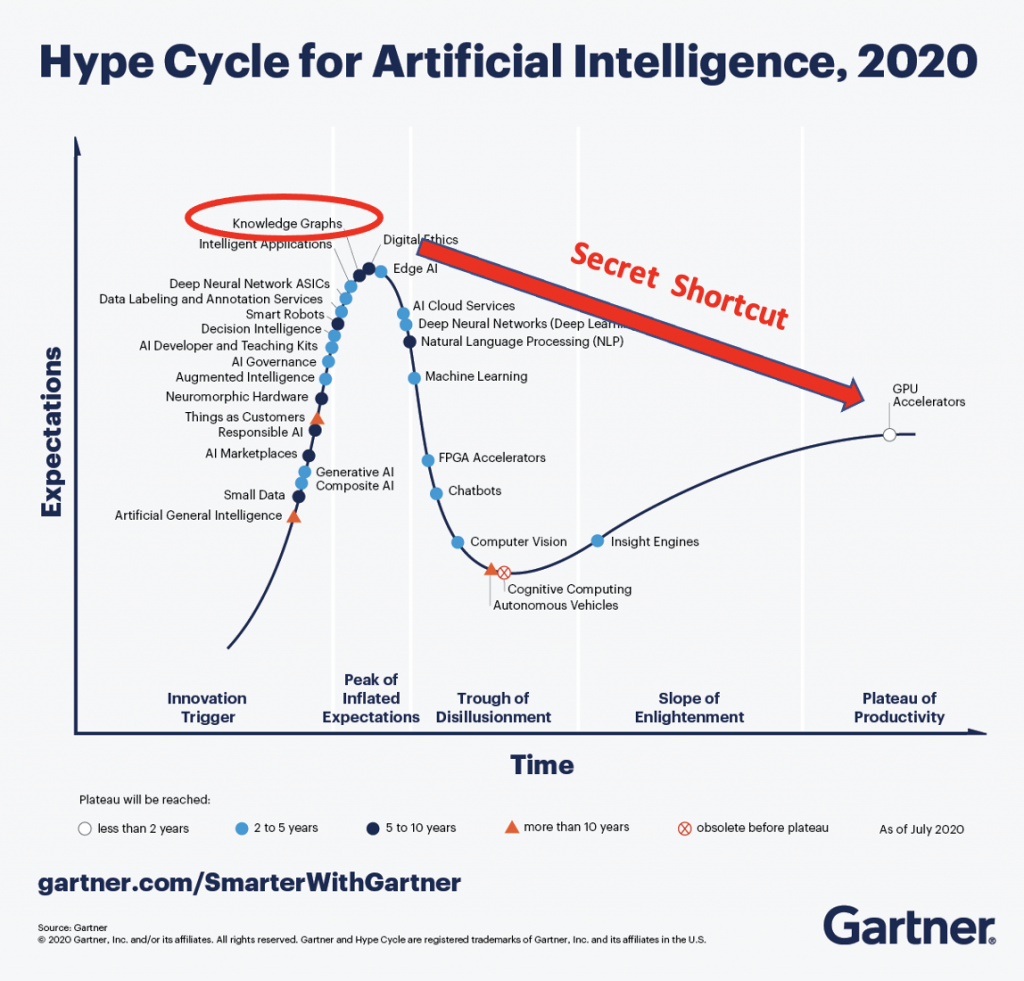
Gartner has put “Knowledge Graphs” at the peak of inflated expectations. If you are a Knowledge Graph software vendor, this might be good news. Companies will be buying knowledge graphs without knowing what they are. I’m reminded of an old cartoon of an executive dictating into a dictation machine: “…and in closing, in the future implementing a relational database will be essential to the competitive survival of all firms. Oh, and Miss Smith, can you find out what a relational database is?” I imagine this playing out now, substituting “knowledge graph” for “relational database” and by-passing the misogynistic secretarial pool.
If you’re in the software side of this ecosystem, put some champagne on ice, dust off your business plan, and get your VCs on speed dial. Happy times are imminent.
Those of you who have been following this column know that our recommendations for data-centric transformations strongly encourage semantic technology and model driven development implemented on a knowledge graph. As we’ve said elsewhere, it is possible to become data-centric without all three legs of this stool, but it’s much harder than it needs to be. We find our fate at least partially tethered to the knowledge graph marketplace. You might think we’d be thrilled by the news that is lifting our software brethren’s boats.
But we know how this movie / roller coaster ends. Once a concept scales this peak, opportunists come out of the woodwork. Consultants will be touting their “Knowledge Graph Solutions” application and vendors will repackage their Content Management System or ETL Pipeline product as a key step on the way Knowledge Graph nirvana. Anyone who can spell “Knowledge Graph” will have one to offer.
Some of you will avoid the siren’s song, but many will not. Projects will be launched with great fanfare. Budgets will be blown. What is predictable is that these projects will fail to deliver on their promises. Sponsors will be disappointed. Naysayers will trot out their “I told you so’s.” Gartner will announce Knowledge Graphs are in the Trough of Disillusionment. Opportunists will jump on the next band wagon.
Wait a minute! Life imitates art! We already have one foot in the trough. That was a short ride.
A different side of the Gartner empire put Graph DBMSs in the trough. We tend to conflate Knowledge Graphs with Graph Databases because, to us, they are one and the same. But on a moment’s reflection, maybe they aren’t splitting hairs. Maybe this is the Neo4js of the world.
In any event, this is the Gartner fate for Knowledge Graphs, at least in the short term. But there is a plateau of productivity out there. How does one get there?
As the dust settles, quietly, and initially on the periphery, will come case studies and stories of firms successfully leveraging Knowledge Graphs. Some, to help their AI/ML projects as Gartner suggests, and some to do the blocking and tackling of enterprise information systems: economical systems integration, combining structured and unstructured data, blending external data with internal, and beginning the process of decommissioning legacy systems and silos.
The process takes time. The winners won’t be apparent for 3-5 years, at which point Gartner will announce that Knowledge Graphs are now on the plateau of productivity. As a bit of a reference point, look at what is on the plateau now: GPU Accelerators. Not exactly a breakthrough technology (anymore).
The difference between GPU Accelerators and Knowledge Graphs is that GPU Accelerators are something you can buy. Knowledge Graphs are something you do. Five years from now, when you find out your rival is benefitting from their Knowledge Graph implementation, you will find that you are five years behind on a journey that is going to take many years and may still involve many missteps.
There is a way to avoid the trough of disillusionment. There is a route around. It involves working with firms who have quietly and patiently led clients around the obstacles and pitfalls. This technology is easy to initially pick up, but it takes a long while to master.
We have been focusing exclusively on this space for 20 years. The first ten years focused primarily on design of enterprise ontologies and the architectures to implement them; the last ten years focused on implementation, during which time we designed and implemented over 50 Knowledge Graph based systems. We have methodology, consistent design patterns, and trained staff.
If you’re interested in Knowledge Graphs, and would like to avoid the trough of disillusionment, contact me: mccomb@semanticarts.com.



